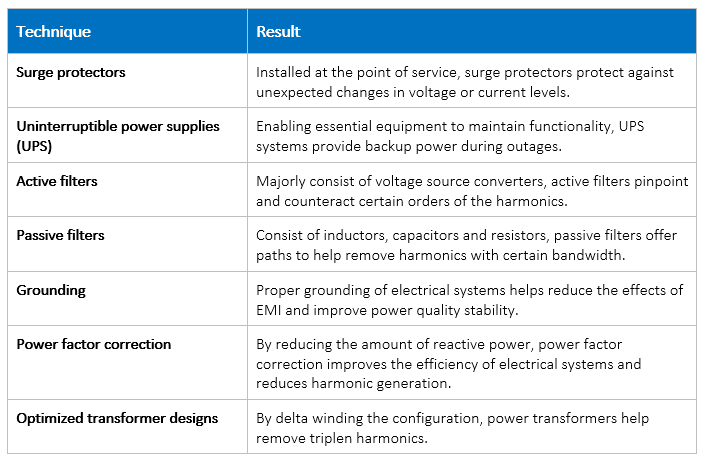

Daniel Wang & Arash Tavighi
Inadequate power quality can lead to numerous issues, including equipment damage and serious system malfunctions. These can all have dire consequences for utilities and their customers. Let’s look at how power quality affects utilities today, as well as what negatively impacts quality, and examine mitigation techniques that can help prevent disaster.
Power quality is one of the core criteria that affect customer perception of a utility. A broad category, power quality includes a wide range of elements of the power supply, including voltage stability, frequency stability, and harmonics.
Inadequate power quality can cause problems like equipment damage, diminished performance, reduced efficiency, system malfunctions, and more. Understanding the root causes of power quality problems and developing effective mitigation methods is an essential part of the service delivery lifecycle.
What causes power quality issues?
Several factors can contribute to poor power quality. Some of the most common issues are created by events associated with power transients, which are rapid changes in the voltage or current levels caused by electrical events (lightning strikes, etc.); power outages due to equipment failure or grid overload; and voltage sag, when voltage levels drop below a certain value and cause equipment shutdowns. Other factors can include high-frequency signals generated by non-linear loads, known as harmonics; and electromagnetic interference (EMI), which can disrupt the functionality of devices, creating malfunctions or causing system shutdowns.
What does poor power quality look like?
In day-to-day operations, power quality issues can present themselves as recurring instances of:
- Brownouts that affect equipment functionality and diminished performance
- Motor burnouts that cause motors to overheat, resulting in equipment damage
- Catastrophic data loss from sudden power outages and voltage sags
- Equipment malfunction that can shut down entire systems, increasing downtime and maintenance overhead
Mitigation strategies
To address quality issues head-on, a number of strategies can be employed.

Reducing risk, increasing profit
Because power quality is a critical component of the electrical supply system, understanding quality issues, their causes, and effective mitigation techniques is essential to ensure reliable and efficient operations. By employing best practices in power quality management, utilities can significantly reduce the risks associated with power quality issues to achieve higher customer satisfaction and increased profitability.
Partner with the experts in power quality
Need help mitigating power quality challenges? Our experienced power systems experts are ready to help! Please contact us to get started.
